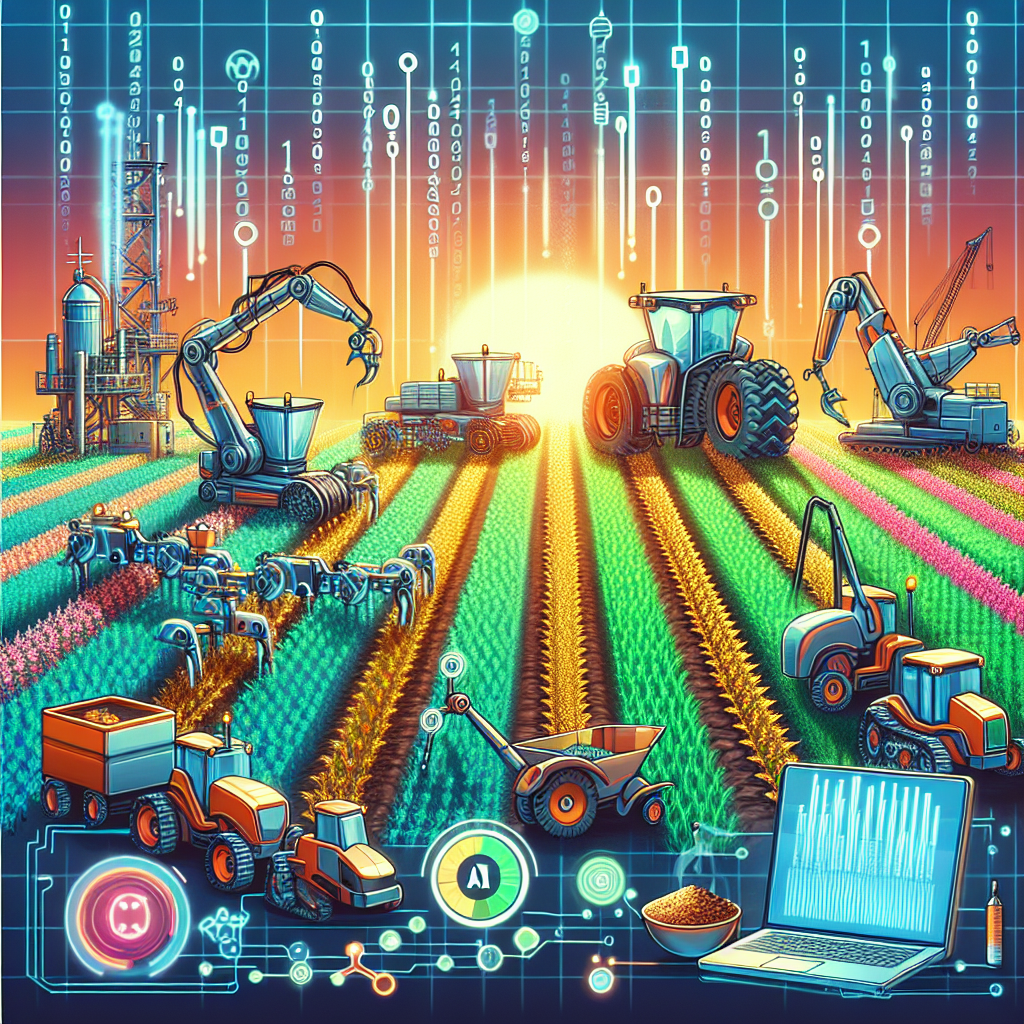Agriculture has always been a labor-intensive industry, requiring farmers to spend countless hours tending to crops and livestock. However, with the advent of artificial intelligence (AI) and robotics, the agricultural sector is undergoing a major transformation. AI applications in agri-robotics are revolutionizing farming practices, making them more efficient, sustainable, and productive.
Innovations in Farm Automation
One of the major advancements in farm automation is the development of autonomous tractors and harvesters. These machines are equipped with AI algorithms that allow them to navigate fields, detect obstacles, and optimize their routes for maximum efficiency. By eliminating the need for human operators, autonomous vehicles can work around the clock, increasing productivity and reducing labor costs.
Another key innovation in agri-robotics is the use of drones for precision agriculture. Drones equipped with cameras and sensors can collect data on crop health, soil moisture levels, and pest infestations. This information is then analyzed by AI algorithms to generate insights that help farmers make informed decisions about irrigation, fertilization, and pest control. Drones can also be used to monitor livestock, track their movements, and detect any signs of illness or distress.
Robotic arms and grippers are also being used in agriculture to automate tasks such as planting, weeding, and harvesting. These robots are capable of performing delicate and precise movements, reducing the risk of damage to crops and increasing efficiency. By taking over repetitive and labor-intensive tasks, robotic arms free up farmers to focus on more strategic aspects of their operations.
AI-powered agricultural robots are also being used for weed control. These robots use computer vision and machine learning algorithms to identify and target weeds, applying herbicides only where needed. By reducing the use of chemicals and minimizing the impact on the environment, these robots help farmers adopt more sustainable practices.
In addition to field operations, AI applications in agri-robotics are also being used in livestock management. Robotic milking systems, for example, use AI algorithms to monitor the health and behavior of dairy cows, optimizing the milking process and improving milk quality. Similarly, robotic feeders can automatically dispense feed to livestock based on their individual nutritional needs, ensuring that they receive the right amount of food at the right time.
Overall, the integration of AI technologies into agriculture is transforming the way farmers operate, making their practices more efficient, sustainable, and profitable. By leveraging the power of AI and robotics, farmers can optimize their resources, reduce waste, and increase their yields, ultimately contributing to a more secure and sustainable food supply.
FAQs:
1. How are AI and robotics changing the agricultural industry?
AI and robotics are revolutionizing the agricultural industry by automating tasks, increasing efficiency, and optimizing resource use. These technologies enable farmers to make data-driven decisions, reduce labor costs, and improve productivity.
2. What are some examples of AI applications in agri-robotics?
Some examples of AI applications in agri-robotics include autonomous tractors and harvesters, drones for precision agriculture, robotic arms and grippers for planting and harvesting, and robotic systems for weed control and livestock management.
3. How do AI-powered agricultural robots help farmers adopt sustainable practices?
AI-powered agricultural robots help farmers adopt sustainable practices by reducing the use of chemicals, optimizing resource use, and minimizing waste. These robots enable farmers to target pests and weeds more precisely, reducing the environmental impact of their operations.
4. What are the benefits of using AI and robotics in agriculture?
The benefits of using AI and robotics in agriculture include increased productivity, reduced labor costs, improved efficiency, and more sustainable practices. These technologies enable farmers to optimize their resources, make data-driven decisions, and improve their overall profitability.
5. How can farmers integrate AI and robotics into their operations?
Farmers can integrate AI and robotics into their operations by investing in autonomous vehicles, drones, robotic arms, and other AI-powered technologies. They can also partner with tech companies and research institutions to develop customized solutions that meet their specific needs and challenges.

